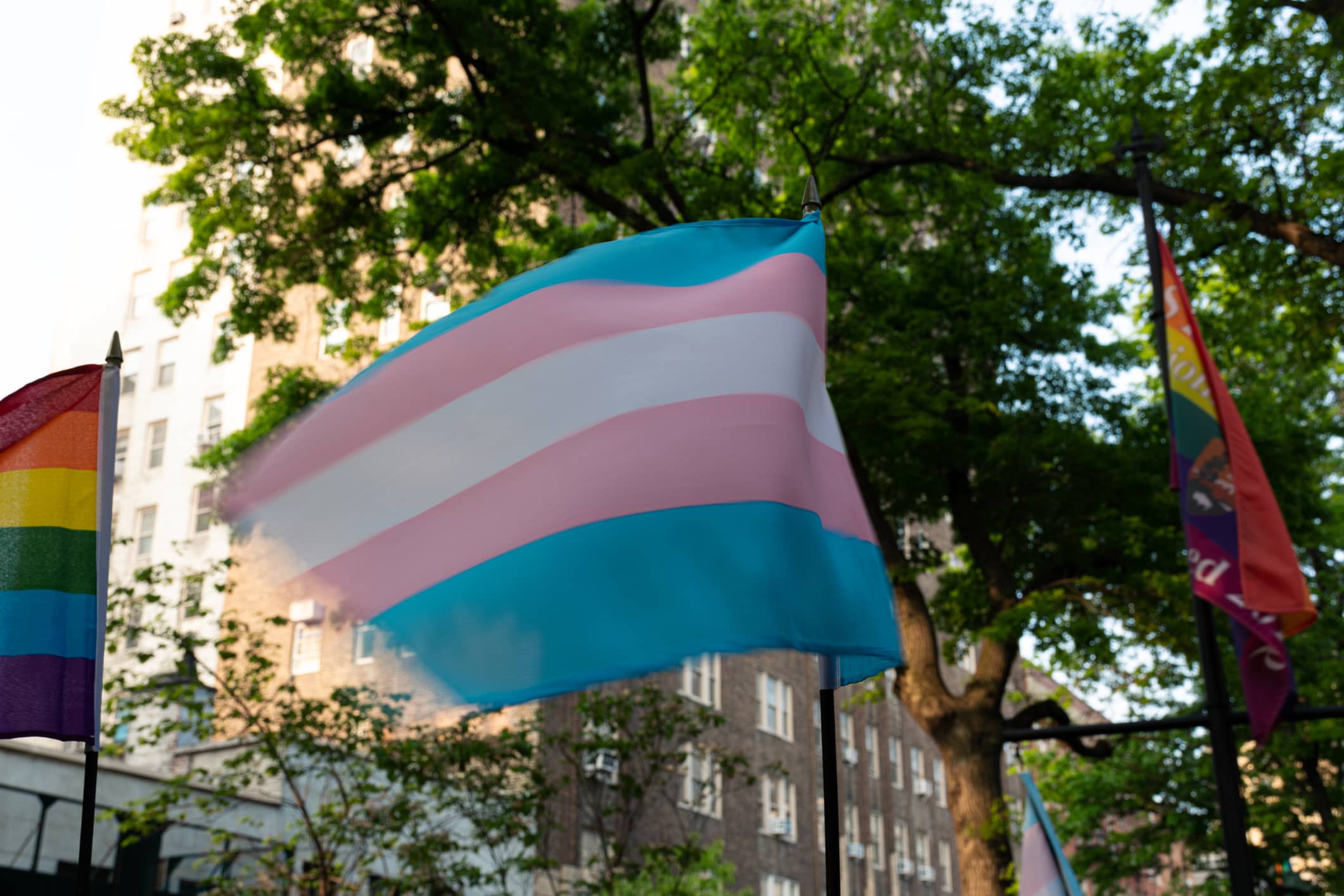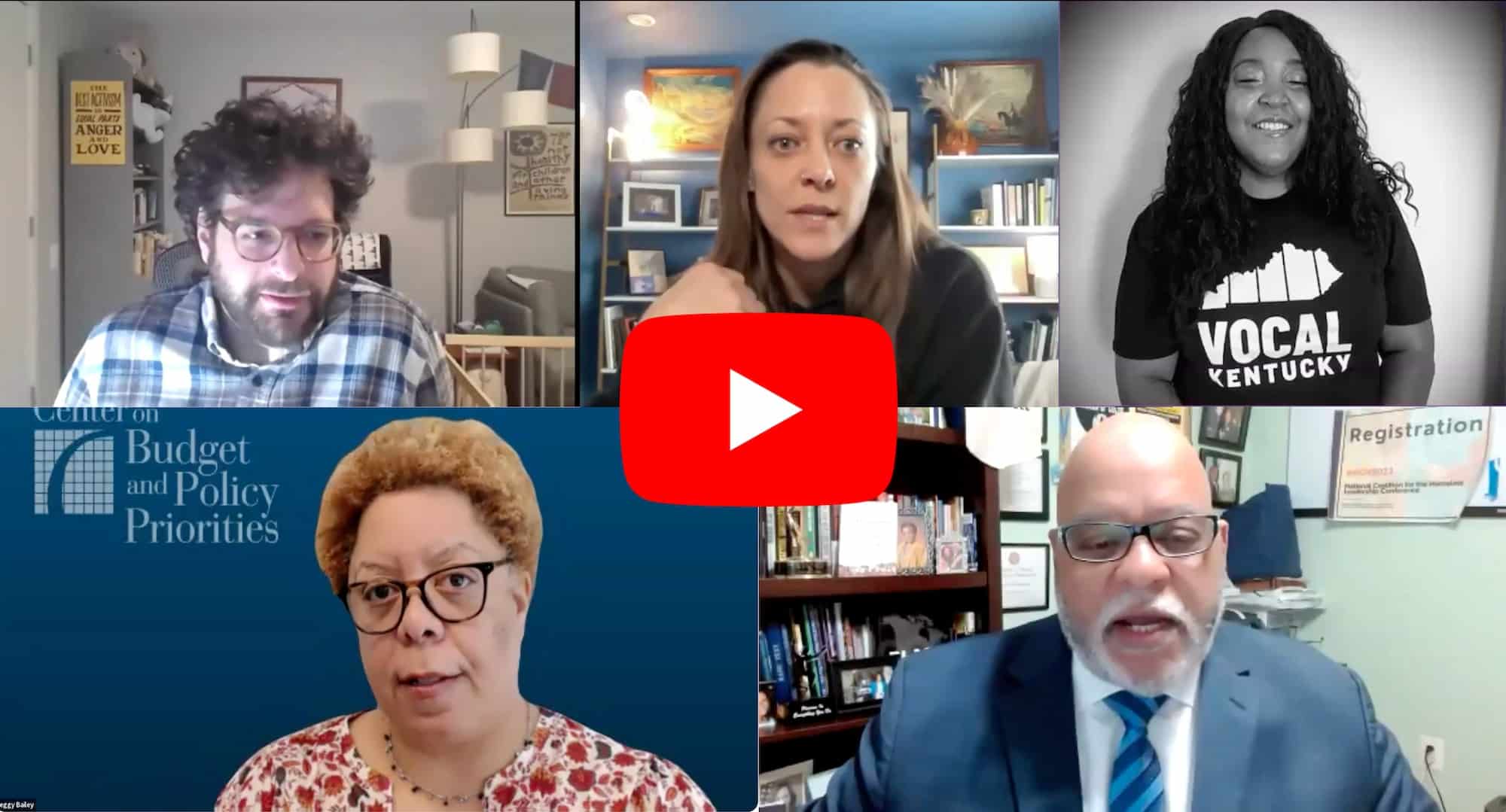Since Trump took office, the new president’s administration has continuously taken aim at transgender people. Those attacks have affected every corner of American life—from hospitals and schools to the military—and they have extended to an even more vulnerable subgroup: trans and gender nonconforming people who are unhoused. They experience homelessness at higher rates—and are much more likely to be unsheltered if they are homeless.
Advocates are anxious about the content of as-yet unreleased proposed changes to the Equal Access Rule of 2016, which requires that unhoused people be allowed to access the housing and shelters they need according to their gender identity, and applies to all facilities that receive funding from the Office of Community Planning and Development at the Department of Housing and Urban Development (HUD). But in the meantime, they worry that the hostility trans people are facing from all angles is keeping them from feeling safe and that fear could prevent them from using the resources that are still legally open to them.
Disarming the Equal Access Rule
On the first day of his presidency, Trump issued an executive order that denies the validity of trans identity (not to mention the biological reality of intersex people). It also instructs HUD to begin the process of dismantling the Equal Access Rule of 2016. In February, HUD Secretary Scott Turner announced that the rule would no longer be enforced. Soon after, HUD sent the Office of Information and Regulatory Affairs proposals to change the rule, although advocates still don’t know what the new language will be (or whether a new, proposed rule will be approved.)
This isn’t the first time the Equal Access Rule has been in the crosshairs—as with many actions that Trump has taken during his second term, it was attacked by his administration during his first term, as well. There was tremendous backlash—66,000 public comments’ worth. Ann Oliva, CEO of the National Alliance to End Homelessness, says that most of the comments were in the rule’s defense. (NAEH has cited this as the most comments ever received regarding a HUD regulation.) “And that indicates to me that there is a lot of support for these kinds of protections in homeless services,” Oliva says.
On the ground, it’s not clear how much this threat has changed shelters’ actions. In April, Oliva told Shelterforce,“We’ve heard some anecdotal evidence that there are pockets of, or a few organizations, that are backing off of serving people according to their gender identity in their programs,” but, she said, “we have not heard widespread reports that this is a problem.” Overall, “communities and providers are actually in favor of the Equal Access rule protections being in place because it is important to… serve people with dignity,” she says.
That value extends beyond trans people—the Equal Access Rule was originally created in 2012 to protect people from discrimination on the basis of gender and sexual orientation. The rule “requires programs to serve families according to how they identify themselves as a family unit,” Oliva says. “So that could include an unmarried couple who has a child with them. It could include extended family that is presenting for services together, like a grandparent or an aunt or uncle, that’s in the family unit,” and children seeking shelter together with their single parents, regardless of gender. So far, Trump and Turner have specifically targeted the 2016 update to the law, which added to these protections the right for people to be served according to their gender identity.
Some state and local governments, like New York state, have their own laws that offer the same protections the 2016 Equal Access Rule does. Will Watts, deputy executive director for advocacy at the Coalition for the Homeless in New York City, says that the organization has been connecting with the city’s Department of Homeless Services, encouraging the city department to remind service providers and the public “that New York continues to honor its values and continues to support members of the [trans and gender nonconforming people] population.”
Vague New Language Complicates Continuum of Care Grants
Shelterforce has followed a number of funding cuts and freezes since Trump took office. You can find an ongoing list of those changes to housing programs here. In February, local homelessness service providers feared they wouldn’t receive their continuum of care grants at all when the awards didn’t come in on time and HUD didn’t offer any explanations for the delay. Eventually, the awards were granted—but they came with new grant agreements that barred the use of those funds to “promote ‘gender ideology.’” Beyond providers’ obvious concerns about signing an agreement with language that’s hostile to the people they serve, the language may also directly violate state laws that require protection for trans people, Oliva says.
That’s if they can determine what the new wording even means. “It’s really vague,” says Seran Gee, a staff attorney at Advocates for Trans Equality. “‘Gender ideology’ itself is a weird concept that they’ve constructed. It’s not a real thing. I guess ‘gender ideology’ just means that trans people exist.”
It remains to be seen whether the new language will stand up in court. On May 2, a group of cities and counties sued HUD over the new requirements, which also require grantees to comply with a number of other conditions, including forbidding grantees to use the funds to aid or promote “illegal immigration.” The suit argues that the “gender ideology” language is both illegal and vague.
“The definition of ‘gender ideology’ is not only demeaning, but also idiosyncratic and unscientific,” the suit says.
On May 7, a district court judge issued a temporary restraining order in the case—meaning that for now, HUD can’t enforce or impose its new language on the grants.
As they wait out legal challenges, advocates are concerned that the Trump administration’s sweeping attacks on the trans population will prevent trans homeless people from getting the support they need from homeless services. Even when the law doesn’t change, the comfort level for trans people to seek care does. It’s already hard to find shelter—having a hostile administration in charge, and uncertainty about whether service providers will protect you, makes it even harder.
Trans people may just refuse to go to service providers under these conditions, says Gee, because not knowing how they will be treated will aggravate their gender dysphoria. Showing up at a shelter in this environment “also just puts them at risk of harassment and abuse,” Gee adds. “It’s going to change the calculus where they determine whether it’s safer for them to be in a shelter or on the street.”
But in the meantime, Gee says, organizations shouldn’t “over-comply,” hurting vulnerable trans clients in the process. “Having a trans flag in a visible place, and having a sign that says, ‘This is a trans flag,’ is not necessarily promoting gender ideology . . . Saying that trans people are permitted to take their medications in private in this location—that’s not promoting gender ideology, that’s just a statement of policy.”





Comments